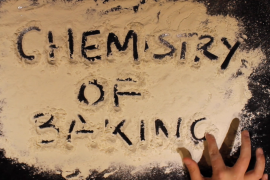Good teachers have an immovable place in the cultural landscape of education. Kind, dedicated, wise, knowledgeable, altruistic, good teachers do it for the love of the job. These teachers change lives for the better. Books, tv and movies have done much to proselytize the importance of teaching and teachers. A 1993 article in Teacher Education Quarterly cited ‘the power and lingering appeal of Robin Williams’ Mr Keating’ of Dead Poets Society (1989) fame. Likewise. the early aughts were especially replete with representations of good teachers “sticking it to the man”, as Jack Black’s character would say in School of Rock (2003) or through the quieter resistance of Gérard Jugnot’s music teacher in the 2004 Oscar nominated film The Chorus. Good teachers here are largely depicted as lone stars, who resist oppressive educational systems to transform students’ lives.
All of us, if given a moment, would be able to call to mind a specific teacher or educator who made a difference to us as a student. Education is social and learning is relational, so of course the individual we encounter as a student matters. However, there is a huge problem in fixating on the trope of the good teacher and positioning teaching as an inherent individual quality or character trait.
However, there is a huge problem in fixating on the trope of the good teacher and positioning teaching as an inherent individual quality or character trait.
In his book The Courage to Teach Palmer writes about the paradoxes of teaching: “The same person who teaches brilliantly one day can be an utter flop the next. Though normally we take that paradox in a fatalistic or self-mocking manner […] we are asked to take it seriously as a source of self-knowledge”. Anyone who has ever taught knows what it feels like when a lecture, tutorial or workshop goes wrong. This experience will never be enjoyable but knowing that it is one that is shared by everyone in education, whether visible or not, does help. More important is recognising that this is not any personal failing or character defect but something that, like lots of professions, has a body of practice, evidence and collective thinking behind it.
The myth that “you either have it or you don’t” is exceptionally excluding, in more ways than one. Focusing on the teacher as charismatic performer overlooks that: a) front-of-class talking accounts for a small percentage of an educator’s workload b) focusing on personality is prone to bias and assumptions about who can or cannot occupy this role and c) there are students involved in this enterprise we call learning. If good teaching really is “anything that helps students learn” (Stephen Brookfield) then we may need less rousing speeches atop desks and more of the complex and often quiet work involved in designing curricula and supporting students to navigate its channels and tributaries.
We have come a long way towards thinking of teaching and learning in higher education as something that can be developed and improved. Despite this, it remains hard to separate the personal from the professional. We are more likely to talk of being an academic or being a lecturer – with the sector capitalising on the vocational “doing it for the love” of the work. Added to which, university teaching is especially isolating and prone to impostership, with any training on how to teach often occurring long after our first experience in front of a tutorial group. This vulnerability can mean that, while many routinely submit themselves to the often brutal process of peer review in research, there is much wider reticence to engage in peer review of teaching despite this being typically gentler, more developmental and situated closer to home.
It is true that peer review of research and peer review of teaching differ. The first allows for an anonymous divide between an article’s author and its reviewer outside of any employment model. But while broad concerns about surveillance or performance management are understandable, good peer review of teaching can be done safely in ways that manage these risks. The University of Sydney’s institution-wide Peer Review of Teaching program is a great example of how this can be done well. From basic conflict of interest management through to systems that ensure that reviews only ever go to the reviewee, this program demonstrates that we can apply rigour to teaching in a way that is both safe and supportive. Teaching can be reviewed and developed like any other discipline or practice.
Whether through peer review, professional development, or communities of practice, we all need to make teaching less lonely. The professional isolation of educators in classrooms not only poses a risk to quality but poses a risk to the educator themselves. In his famous book Becoming a Critically Reflective Teacher Stephen Brookfield argues that “one of the best things institutions can do to support good teaching is simply provide opportunities for people to talk with each other about what they’re doing in the classroom”.
Teaching needs to be a team sport and one where we have creative license to try new things, recognise that not everything will work, and normalise our failings. In doing so we can not only recover but show curiosity and interest in why that particular class, assessment, or activity didn’t work how we imagined it.
Seeing teaching and learning as something that we do, instead of the person that we are, gives us permission to discard shame and impostership in favour of something more thoughtful and ultimately freeing.
Moreover, by recognising education as something broader than personality or skilled performance we can restore value to the vast iceberg of work that goes on behind the scenes and the educational expertise across the university community. To teacher is an island. All of us are reliant on the work of educational designers, librarians, curriculum managers, policy writers, and student support workers (just to name a few). Education is so much more than lone stars upon a stage. Fortunately, there has been growing recognition of educators more broadly through the expanding reach of educational fellowships and the Professional Standards Framework (PSF) that acknowledges the breadth and diversity within higher education.
Reframing how we think about education as something that is collaborative, student-centered, and learnable is ultimately freeing. There is no one-size-fits-all approach to student learning and meeting students where they are is a continuous process, not a static end-point. We teach to change the world, and all of us with some support can do it.
What next?
- Receive a free peer review of teaching through your university’s Peer Review for Teaching program
- Seek recognition for all of your work as an educator through the Sydney Educational Fellowship Program. This program recognises curriculum design, assessment, feedback and all the other ways we support our students. It is open to all Sydney educators at all stages of their career including those on casual and professional contracts.
- Explore new pedagogies and approaches to teaching through the Modular Professional Learning Framework – short modular courses to keep your teaching practice up to date.





